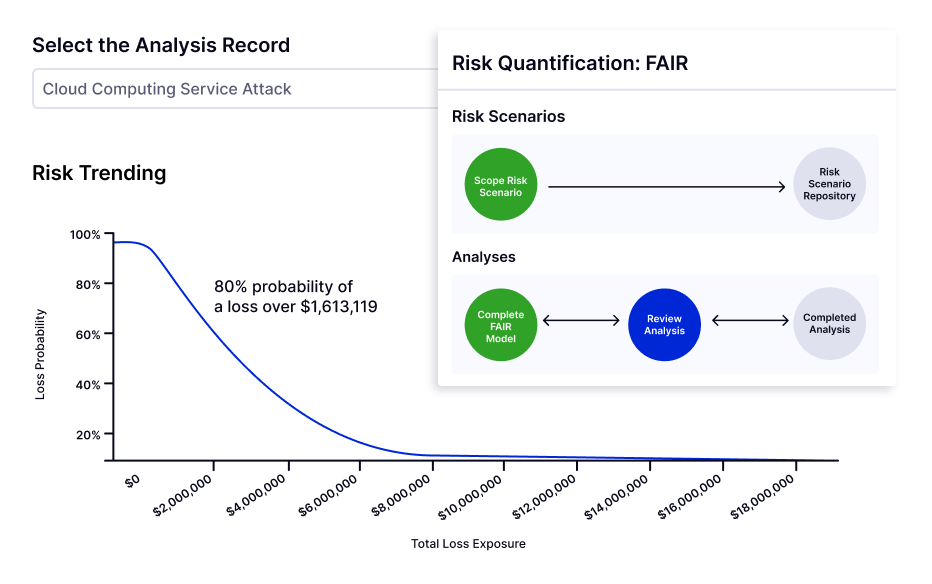Risk Cloud Quantify®
Quantify and communicate cyber risks in financial terms with Monte Carlo simulations and the Open FAIR™ Model. Enhance traditional methods, providing stakeholders with clear, confident insights into your business’s challenges for better decision‑making and risk management.
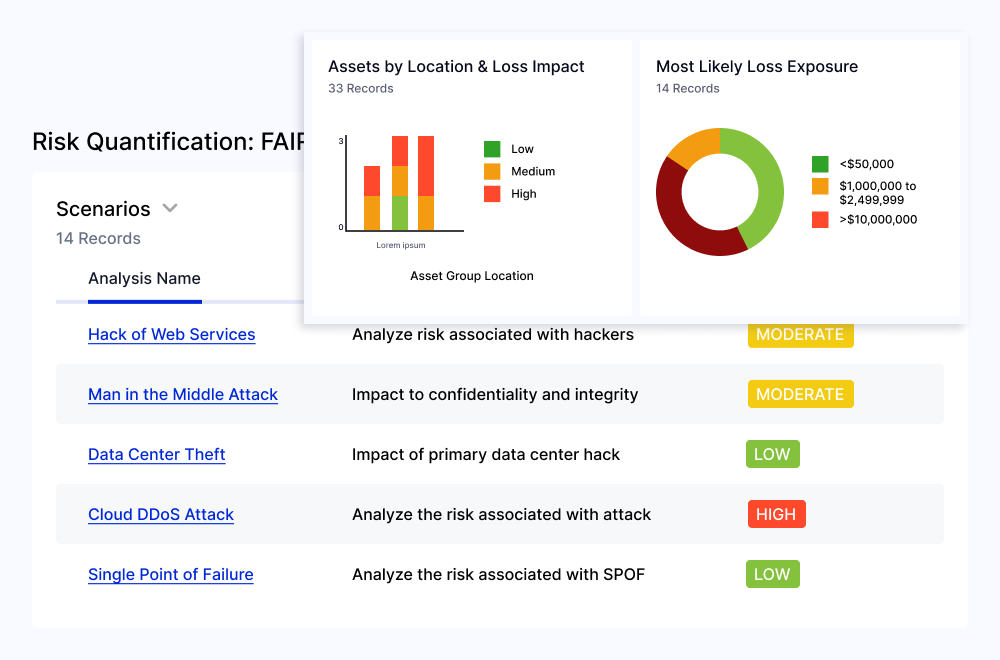
Quantify Risks in Financial Terms
Risk Cloud Quantify® translates risks into financial terms, enabling teams to assess, communicate, and manage risk using Monte Carlo simulations and the Open FAIR model. It helps prioritize risk responses, driving ROI‑focused decision‑making.
Key Capabilities and Product Features
Calculate potential financial losses from cyber incidents, including fines, legal fees, recovery costs, lost business, and reputational damage.
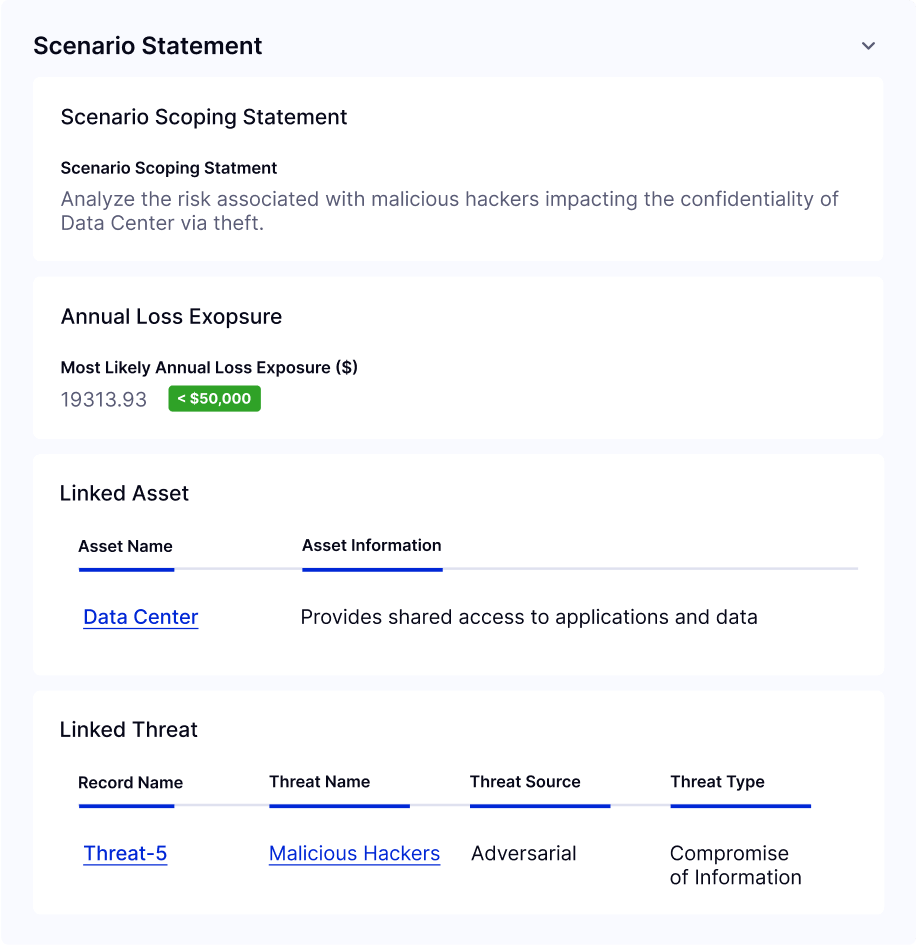
Elevate collaboration by adding financial context to risk decisions. Prioritize investments, predict and mitigate risk, and communicate strategies for better buy‑in.
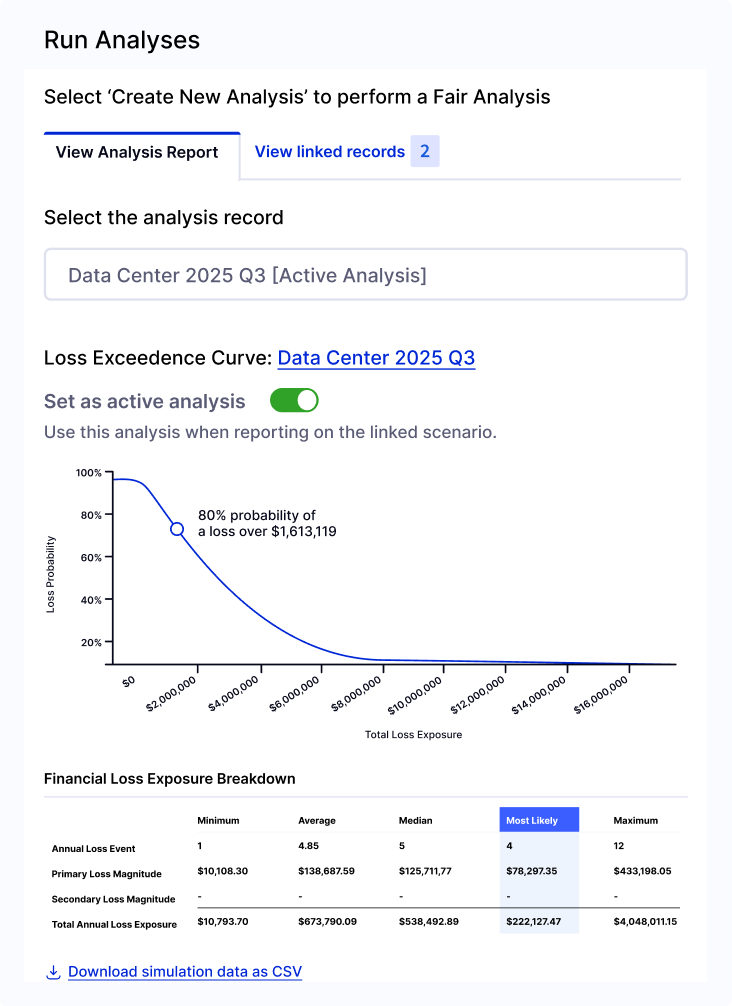
Analyze data, simulate loss curves, and aggregate outputs to understand your full exposure with unlimited calculations and simulations.
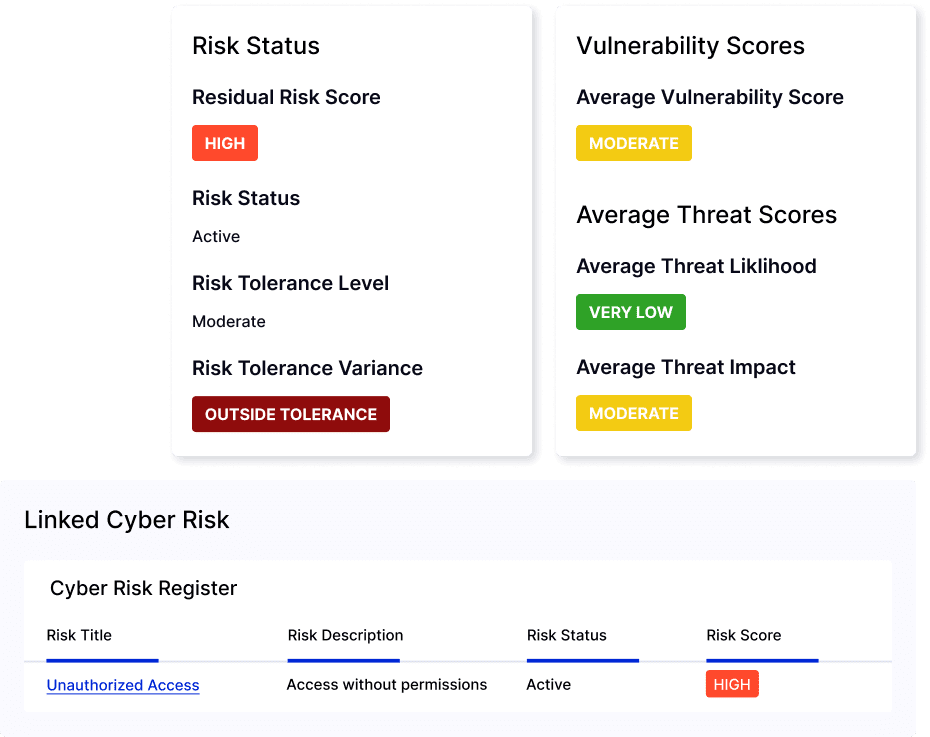
Trusted for over 10 years, the Open FAIR model helps quantify risk, allocate investments, and improve ROI across teams.
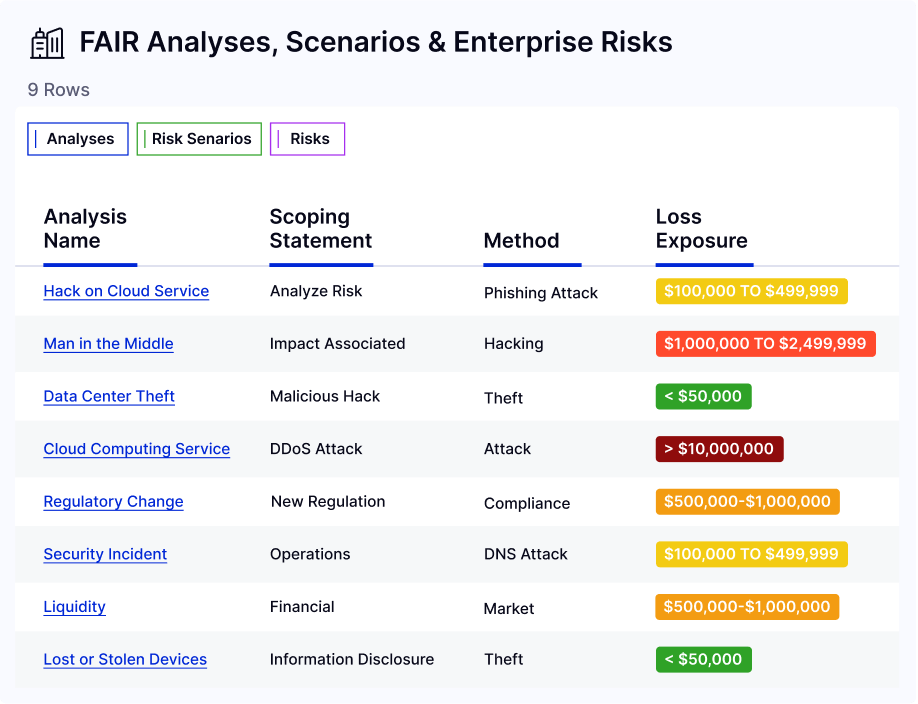
Frequently Asked Questions
As you kick off your first quantitative risk assessment, it’s important to start small and build up from a strong foundation. Working from your risk register, you can begin collecting data, scoping risks, and creating different scenarios with a model like Open FAIR.
We recommend using existing qualitative assessments to prioritize data collection. Select an event with a high likelihood and magnitude, and look for supplementary data from existing sources, like internal files (e.g., incident logs and reports), external data from published reports (e.g., Verizon Data Breach Investigation Report), or – if you’re an existing Risk Cloud® user – data from installed applications.
Now you’re ready to conduct your first quantitative risk assessment! As you get going, focus on incremental improvements instead of perfection. Directionally correct data pulled from public sources is still an improvement over reporting risks in reds, yellows, and greens.
The Open FAIR model is a trusted industry standard for risk quantification – and it’s a publicly available statistical model that generates a transparent, defensible output. Think of Open FAIR as a “glass box” instead of a “black box.” It’s not proprietary and can be inspected and validated if necessary.
Our platform uses the Open Fair methodology to help you determine annual loss exposure, loss event frequency, loss magnitude, and more.
Yes! Risk Cloud Quantify® includes a Monte Carlo simulator that generates the dollar loss range output after running the scenario 50,000 times. Results are displayed in a sharable, annual loss exceedance curve (ALE) report.
While Open FAIR was primarily designed for IT and cyber risk management, it’s a trusted, open model that can be applied to any risk management use case. Assessment outputs are generated using Monte Carlo simulations, adding an additional level of familiarity and trust for non-cyber teams. Existing Risk Cloud users may purchase and implement Risk Cloud Quantify® platform-wide to help translate risk into monetary terms across every use case.
